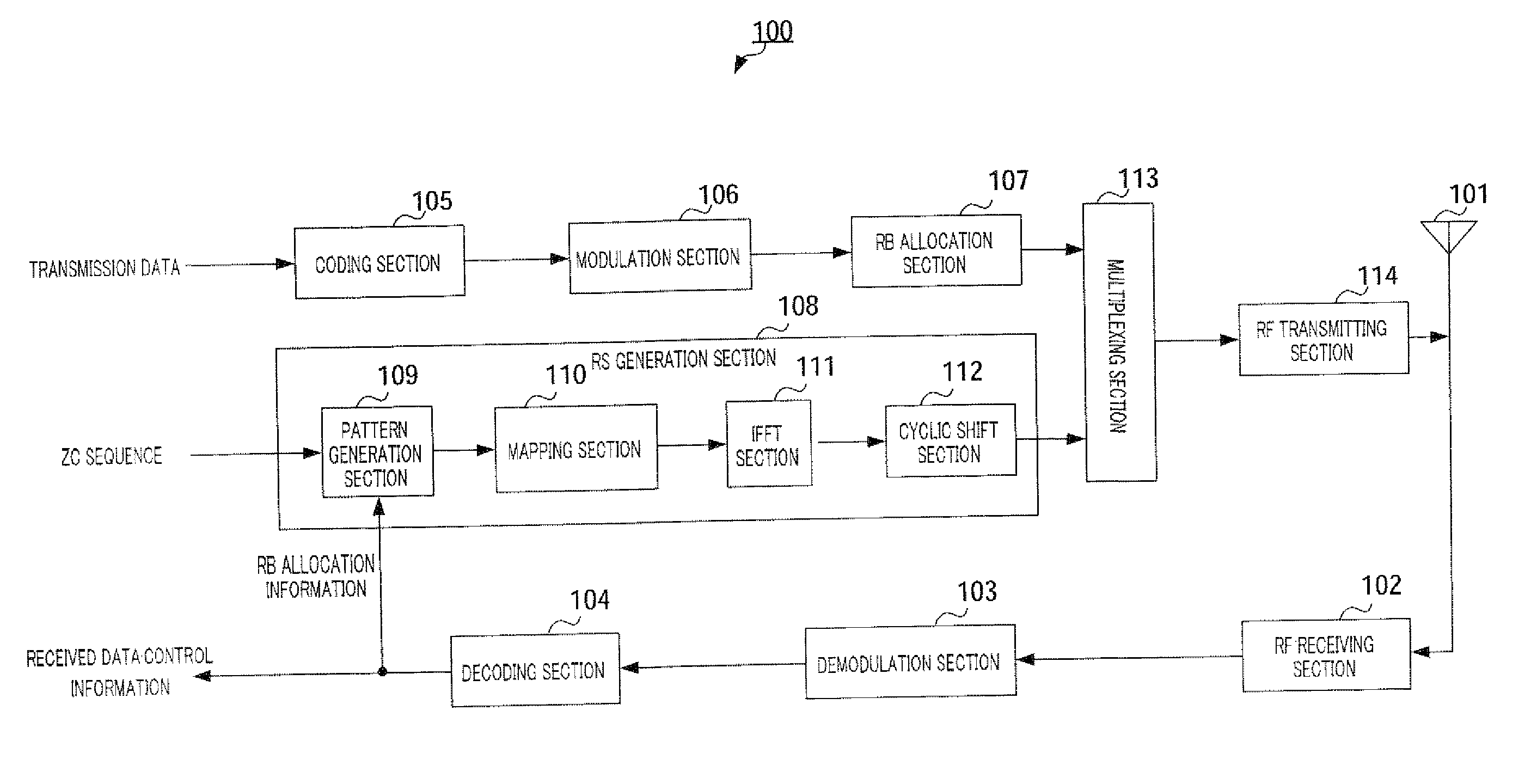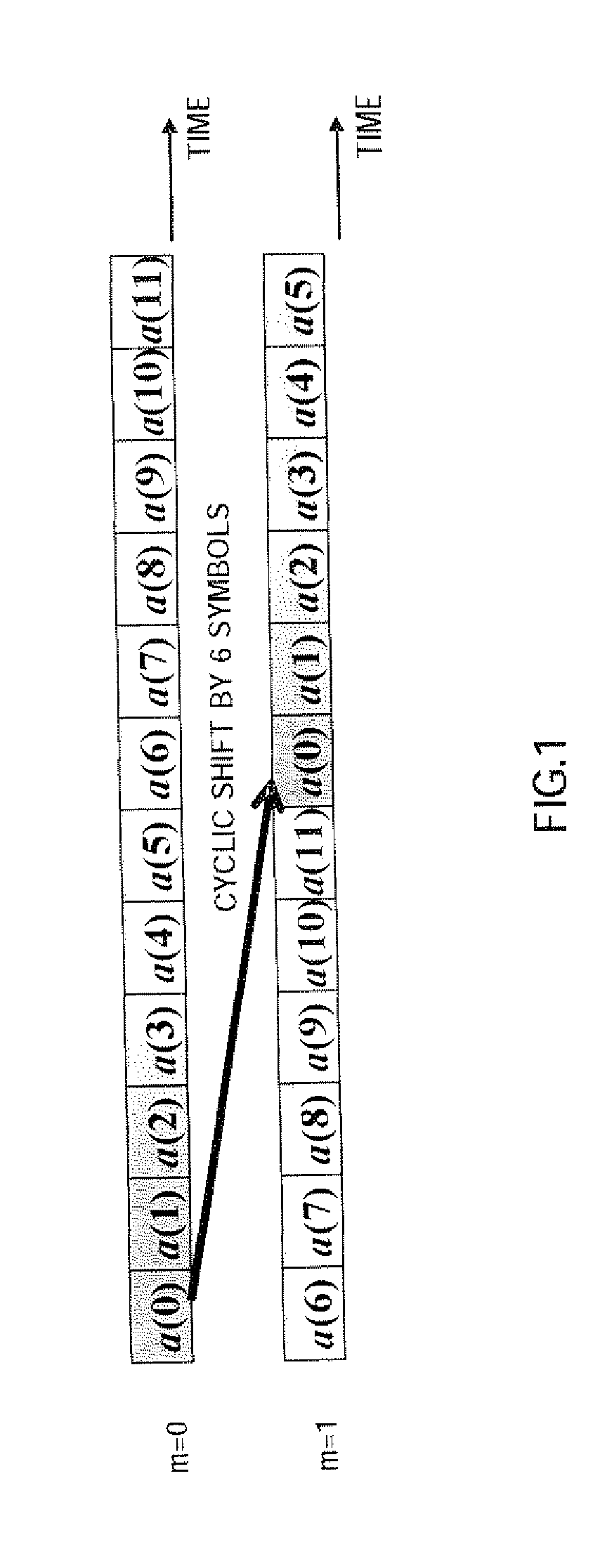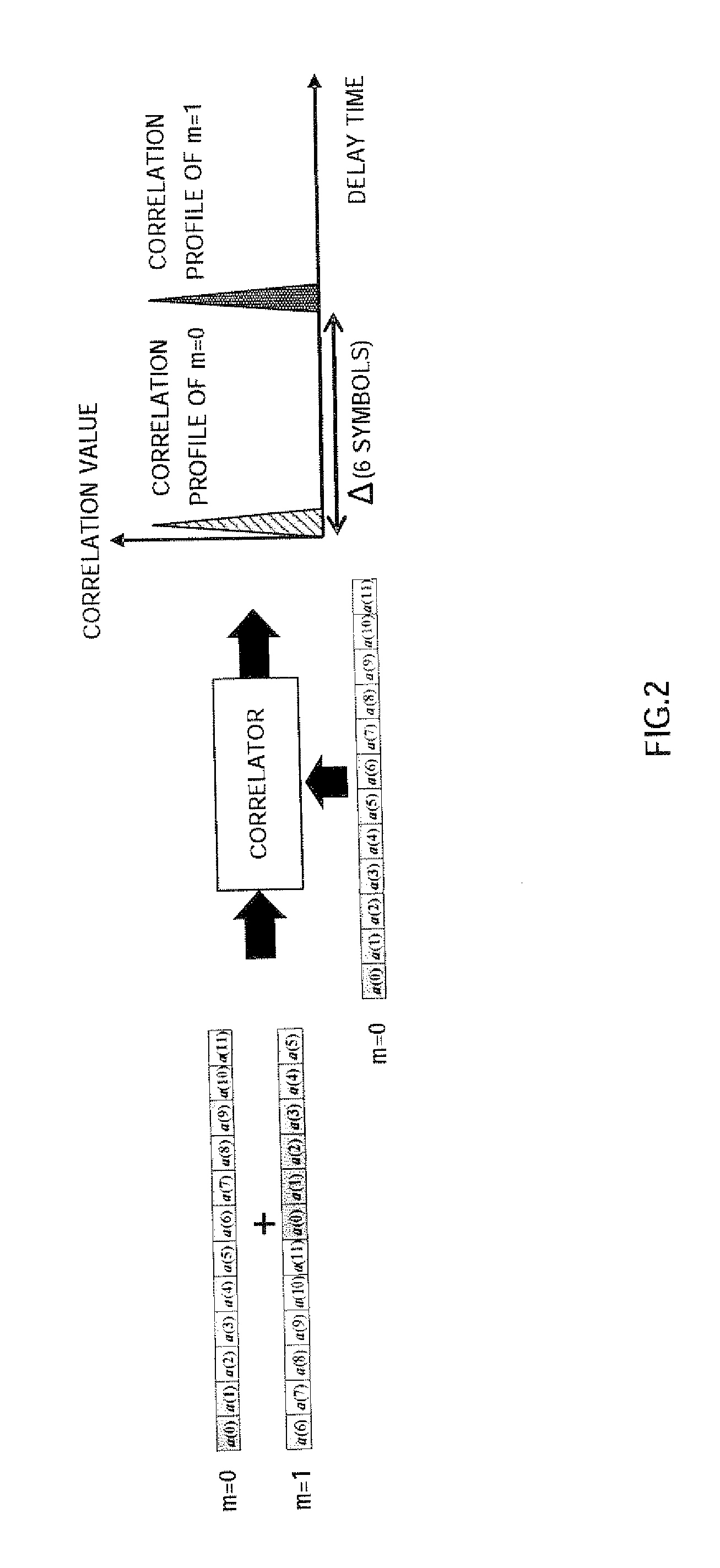Radio transmission device and radio transmission method
a radio transmission device and radio transmission technology, applied in the field of radio transmission apparatus and radio transmission method, can solve the problems of increasing rss, shortening the number of orthogonal sequences available, and shortening the number of quasi-orthogonal sequences with low cross-correlation, so as to prevent the accuracy of channel estimation
- Summary
- Abstract
- Description
- Claims
- Application Information
AI Technical Summary
Benefits of technology
Problems solved by technology
Method used
Image
Examples
embodiment 1
[0051]The configuration of mobile station 100 according to Embodiment 1 will be explained using FIG. 9. RF receiving section 102 performs receiving processing, including down-conversion and A / D conversion, on a signal received via antenna 101, and outputs the signal after the receiving processing to demodulation section 103. Demodulation section 103 performs equalization processing and demodulation processing on the signal after the receiving processing, and outputs the signal after these processing to decoding section 104. Decoding section 104 decodes the signal after the demodulation processing and extracts the data signal and control information. Further, in the extracted control information, the RB (resource block) allocation information is outputted to pattern generation section 109 in RS generation section 108.
[0052]Coding section 105 encodes transmission data and outputs the encoded data to modulation section 106. Modulation section 106 modulates the encoded data and outputs ...
embodiment 2
[0084]Although a case has been explained above with Embodiment 1 where the length of a ZC sequence is a multiple of the number of subcarriers in one RB, a case will be explained with Embodiment 2 of the present invention where the length of a ZC sequence is a prime number.
[0085]Further, the configurations of a mobile station and base station according to Embodiment 2 of the present invention are the same as shown in FIGS. 9 and 10 illustrating Embodiment 1, and therefore will be explained with reference to FIGS. 9 and 10.
[0086]Generally, to adjust a ZC sequence having a sequence length of a prime number to the number of subcarriers in the RS transmission band, studies are underway to generate RSs by cyclic extension and generate RSs by truncation. Now, these RSs will be explained.
[0087]Generally, an RS generated by cyclic extension of a ZC sequence generally uses the ZC sequence having a sequence length of the prime number less than and closet to the number of subcarriers in the RS ...
embodiment 3
[0096]The configuration of mobile station 200 according to Embodiment 3 of the present invention will be explained using FIG. 17. FIG. 17 is different from FIG. 9 in changing RS generation section 108 to RS generation section 201.
[0097]RS generation section 201, which has first cyclic shift section 202, second cyclic shift section 203, DFT section 204, mapping section 205 and IFFT section 206, generates an RS from a ZC sequence and outputs the generated RS to multiplexing section 113. Now, the components of sections in RS generation section 201 will be explained.
[0098]First cyclic shift section 202 cyclically shifts a ZC sequence by a predetermined amount of shift (by the amount of shift assigned per cell or mobile station regardless of the transmission band), the ZC sequence subject to the cyclic shift to second cyclic shift section 203.
[0099]Second cyclic shift section 203 cyclically shifts the ZC sequence further outputted from first cyclic shift section 202 by an amount of shift...
PUM
 Login to View More
Login to View More Abstract
Description
Claims
Application Information
 Login to View More
Login to View More - R&D
- Intellectual Property
- Life Sciences
- Materials
- Tech Scout
- Unparalleled Data Quality
- Higher Quality Content
- 60% Fewer Hallucinations
Browse by: Latest US Patents, China's latest patents, Technical Efficacy Thesaurus, Application Domain, Technology Topic, Popular Technical Reports.
© 2025 PatSnap. All rights reserved.Legal|Privacy policy|Modern Slavery Act Transparency Statement|Sitemap|About US| Contact US: help@patsnap.com



